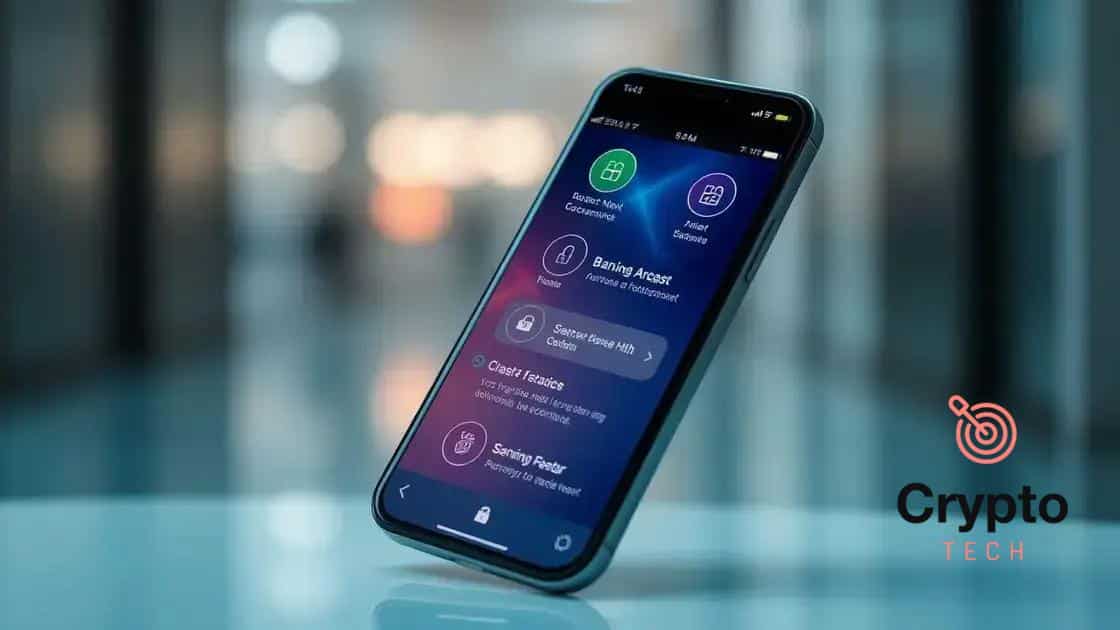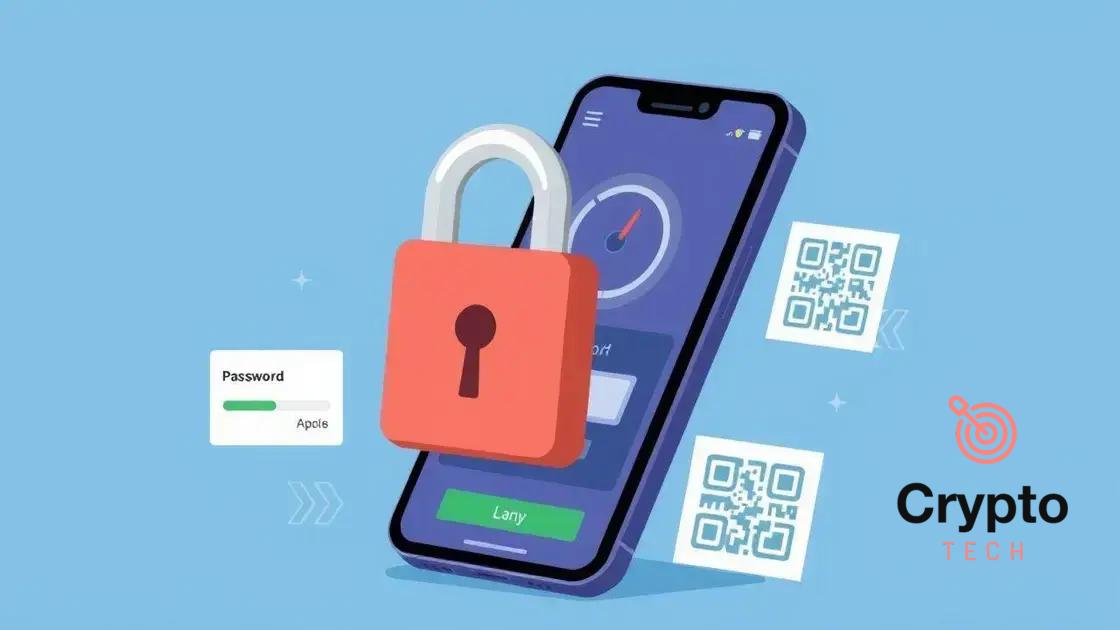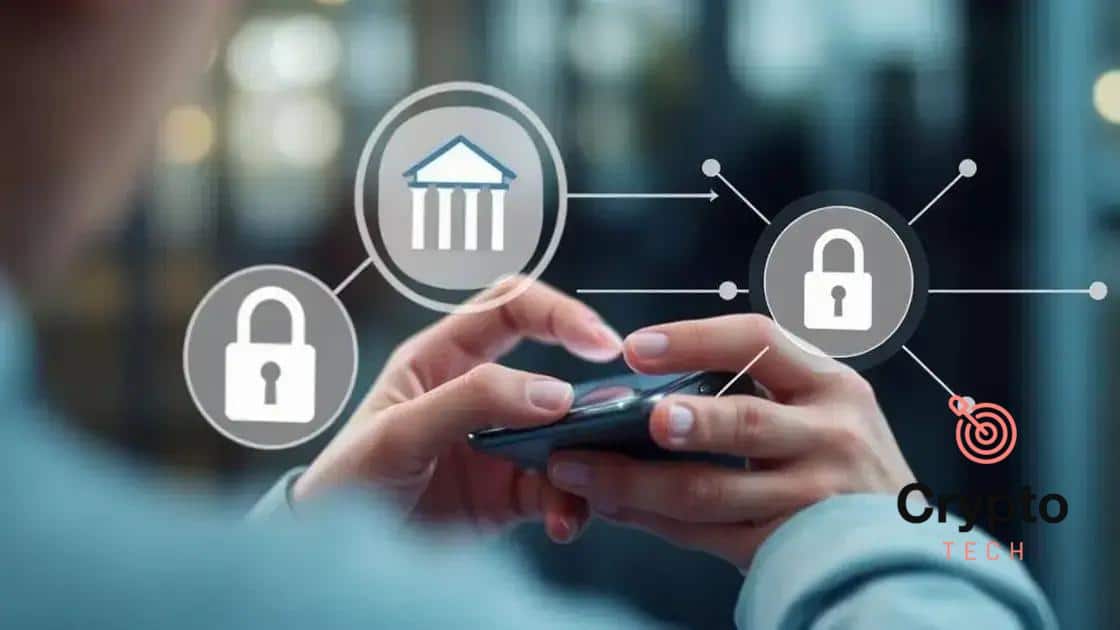Mobile banking security tips for users

Mobile banking security tips for users include regularly monitoring accounts, using strong passwords, enabling two-factor authentication, recognizing phishing attempts, and ensuring safe app usage to protect personal financial information.
Mobile banking security tips for users are crucial in ensuring your finances stay protected in today’s digital age. With more people relying on banking apps, it’s important to stay informed about how to safeguard your personal information.
Understanding mobile banking security
Understanding mobile banking security is essential to protect your personal finances. As we increasingly rely on our smartphones for banking transactions, knowing how to stay safe is key.
When it comes to mobile banking, various types of security measures exist to safeguard your data. Encryption plays a crucial role in protecting your information during transactions. It makes your data unreadable to anyone who might intercept it.
Importance of Strong Passwords
Creating strong passwords is another vital aspect of mobile banking security. Your password should be unique and contain a mix of letters, numbers, and symbols.
- Avoid using easily guessed information, like birthdays or names.
- Change your password regularly to enhance security.
- Consider using password managers to keep track of complex passwords.
Two-factor authentication adds an extra layer of protection. By requiring a second form of verification, it ensures that even if someone gets your password, they cannot access your account without the second factor.
Recognizing Phishing Attempts
Being able to identify phishing attempts is crucial. Phishing scams often come in the form of emails that look legitimate but are designed to steal your login credentials.
Always be cautious and check for signs such as:
- Unusual URL links that do not match the bank’s official site.
- Generic greetings or messages that seem off.
- Requests for personal information, like your PIN.
By staying informed about mobile banking security, you can greatly reduce the risk of fraud. Regularly monitoring your accounts for unauthorized transactions is also a useful practice. This way, if something seems off, you can act quickly to address any issues.
Creating strong passwords and authentication

Creating strong passwords and implementing robust authentication measures are critical steps in ensuring mobile banking security. A strong password acts like a sturdy lock on your personal finance tools, keeping your information safe from intruders.
When crafting a password, it’s important to consider a variety of factors. For example, using a combination of uppercase letters, lowercase letters, numbers, and symbols can enhance the strength of your password.
Key Elements of Strong Passwords
Here are some key elements to keep in mind when developing your passwords:
- Length: Aim for at least 12 characters to make brute-force attacks more difficult.
- Unpredictability: Avoid using common phrases or repeated characters.
- Variety: Use a mix of different character types to increase complexity.
Moreover, it’s equally important to change your passwords regularly. Adjusting your passwords every few months can reduce the likelihood of unauthorized access.
Another layer of security comes from implementing two-factor authentication (2FA). This extra step requires not only your password but also a second piece of information, usually a temporary code sent to your mobile device.
Benefits of Two-Factor Authentication
Using 2FA has several advantages that enhance your overall security:
- Increased protection against phishing and spoofing attempts.
- Limits access even if your password is compromised.
- Provides an extra layer of security for sensitive transactions.
By combining strong passwords with two-factor authentication, you significantly improve your chances of safeguarding your financial data. Always keep security in mind when it comes to your mobile banking operations.
Identifying phishing and scam attempts
Identifying phishing and scam attempts is crucial for maintaining mobile banking security. These attacks often disguise themselves as legitimate communications to steal your personal information.
Phishing attempts can come via email, text messages, or even phone calls. They typically urge you to provide sensitive information, such as your passwords or bank account details. By being aware of the signs, you can protect yourself from falling victim to these scams.
Common Characteristics of Phishing Scams
Here are some common characteristics to watch for:
- Generic Greetings: Phishing messages often start with vague salutations like “Dear Customer” rather than using your name.
- Urgency: Many scams create a sense of urgency, claiming your account will be locked unless you act immediately.
- Unusual Links: Hover over links to see the URL. If it looks strange or does not match the official website, do not click it.
Understanding how to identify these scam attempts can really help protect your financial information. Always scrutinize communications that request sensitive information.
Best Practices to Avoid Scams
Implementing best practices can further safeguard your mobile banking experience. Consider these tips:
- Verify the Source: Always double-check the sender’s email address or phone number before responding.
- Don’t Share Personal Information: Legitimate banks will never ask for sensitive information via email or text.
- Use Official Channels: If in doubt, contact your bank directly using a phone number from their official website.
By being educated about phishing and scams, you empower yourself to make safer choices while managing your finances. Always stay alert and cautious.
Tips for safe app usage

Using banking apps safely is essential for your overall mobile banking security. With the rise of smartphone banking, understanding how to navigate these apps can protect your information and finances.
When downloading a banking app, always ensure it’s from a reputable source. Look for apps that are available on official app stores like Google Play or the Apple App Store. This simple step can prevent you from downloading malicious software that may compromise your data.
Key Practices for Safe App Usage
Here are some key practices to keep in mind when using banking apps:
- Update Regularly: Always keep your app and device updated to protect against security vulnerabilities.
- Use Strong Passwords: As mentioned before, create strong, unique passwords for your banking apps.
- Enable Notifications: Set up alerts for transactions, which can help you spot fraudulent activity quickly.
Utilizing these practices can significantly enhance your security while using banking applications. Additionally, be cautious when connected to public Wi-Fi. Avoid conducting transactions over unsecured networks, as this can expose your data to potential threats.
Recognizing Secure Connections
Always check for secure connections while using banking apps. Look for:
- HTTPS: Ensure the URL begins with “https://” indicating it’s secure.
- Lock Symbols: Many apps display a lock symbol to indicate secure transactions.
- App Permissions: Be wary of apps that request excessive permissions unrelated to their functionality.
Taking these steps can make a big difference in your mobile banking security. Awareness and proper practices help in safeguarding your financial information.
Regularly monitoring your bank accounts
Regularly monitoring your bank accounts is an essential practice for maintaining mobile banking security. Checking your account frequently helps you spot any unauthorized transactions or unusual activity that could indicate fraud.
Setting a routine for reviewing your accounts can greatly enhance your financial safety. You can do this by simply logging into your banking app or website and reviewing your recent transactions. This process takes only a few minutes but can prevent significant potential losses.
What to Look For When Monitoring Your Accounts
When you check your accounts, keep an eye out for specific details:
- Unrecognized Transactions: Always question any charges you don’t remember making.
- Transaction Amounts: Watch for any amounts that seem higher than expected.
- Duplicate Charges: Ensure you’re not being charged multiple times for the same item.
Additionally, it’s smart to utilize transaction alerts. Many banks offer the ability to set up notifications for whenever a transaction occurs. This feature can give you real-time alerts, making it easier to catch fraud as it happens.
Benefits of Regular Monitoring
Regular monitoring of your bank accounts provides several benefits:
- Early Detection: Catching fraud early can minimize damage and secure your funds.
- Enhanced Budgeting: Keeping tabs on your spending can help you manage your budget better.
- Peace of Mind: Knowing your accounts are secure reduces anxiety related to fraud concerns.
By developing the habit of checking your account regularly, you will contribute significantly to your overall mobile banking security. Stay informed and proactive about your financial health.
FAQ – Frequently Asked Questions About Mobile Banking Security
What are some basic security tips for mobile banking?
Always use strong passwords, enable two-factor authentication, and regularly monitor your accounts for unauthorized transactions.
How can I identify phishing attempts related to mobile banking?
Look for generic greetings, unsolicited requests for sensitive information, and unusual links in emails or messages.
Is it safe to use my banking app on public Wi-Fi?
It’s best to avoid conducting financial transactions over public Wi-Fi, as these networks can be insecure.
What should I do if I suspect fraud in my bank account?
Immediately contact your bank to report any suspicious activity and follow their procedures to secure your account.





